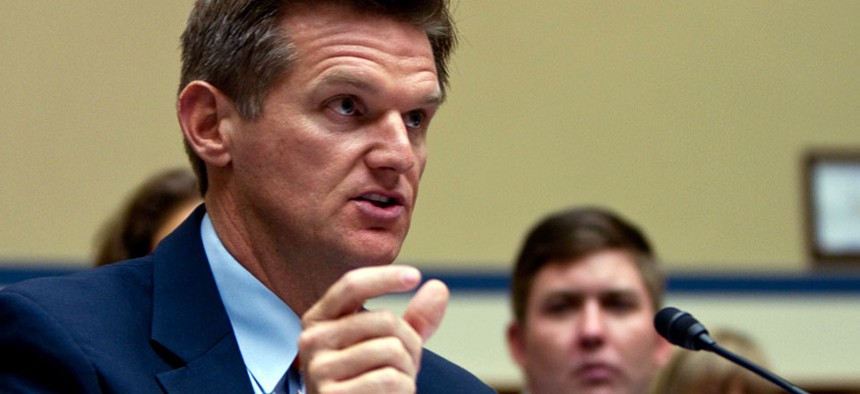
Gregory Long, executive director of the TSP board House subcommittee on Oversight and Reform
TSP Is Having a ‘Booming’ September
The retirement plan’s funds so far are strong and hardship withdrawals from accounts are down, board reports.
The government’s 401(k)-style retirement plan is on track to yield a lucrative September for federal enrollees.
The Thrift Savings Plan has been “booming” this month, said Tracey Ray, chief investment officer of the Federal Retirement Thrift Investment Board, during the agency’s monthly board meeting on Monday. The C Fund, invested in common stocks, is up 4.8 percent to date, according to Ray, while international stocks in the I Fund had gained 8 percent as of Monday. If the plan stays strong for the next week, September should be a welcome change from August’s returns, which were in the red, save for the government securities fund. The I Fund, in particular, has had a tough 2013.
Another positive development: Fewer enrollees are tapping into their TSP accounts for hardship withdrawals or loans, the FRTIB reported on Monday. “After reaching highs in July, hardship and loan transaction volumes returned to typical levels for the time of year with 12 percent and 13 percent respective drops in the number disbursed in August,” a statistical summary from the agency stated. Unpaid furloughs this summer because of sequestration, many of them at the Defense Department, caused anxiety among federal employees governmentwide and increased those transactions.
One area where the board is seeing less momentum is among active-duty service members enrolled in the TSP’s Roth option. Active-duty enrollment has been flat during the last few quarters after a steady increase since May 2012 when the Roth option was unveiled. Still, the total Roth balance from civilian and military participants climbed to $608 million in August; service members hold nearly 42 percent of Roth TSP accounts.
Gregory Long, executive director of the TSP Board, said the drawdown in Afghanistan was responsible for the slowdown in military Roth enrollees, but that he wasn’t worried it would be a long-term problem. FRTIB has tried recently to reach out to service members about the Roth option and encourage them to open accounts, with limited success. An agency pilot program that installed people in the Pentagon during the last three months to educate the military community about the Roth offering had “mixed results,” Long said.
The TSP Roth option allows beneficiaries to invest money that already has been taxed and is not taxed again upon withdrawal, unlike traditional TSP savings. With Roth’s addition, participants now can invest pretax or after-tax dollars in any of TSP’s offerings as long as their total contributions are within the IRS limits. The IRS increased the cap on annual individual TSP contributions in 2013 from $17,000 to $17,500. Employees age 50 and older can contribute an additional $5,500 a year in catch-up contributions as long as their regular contributions for 2013 are expected to reach the $17,500 limit.
During Monday’s meeting, the board also briefly discussed the TSP’s role in the debt limit debate. In May, Treasury Secretary Jack Lew suspended payments to the G Fund as part of the government’s “extraordinary measures” to avoid default on its debts, but will restore the money once the debt ceiling is raised.







